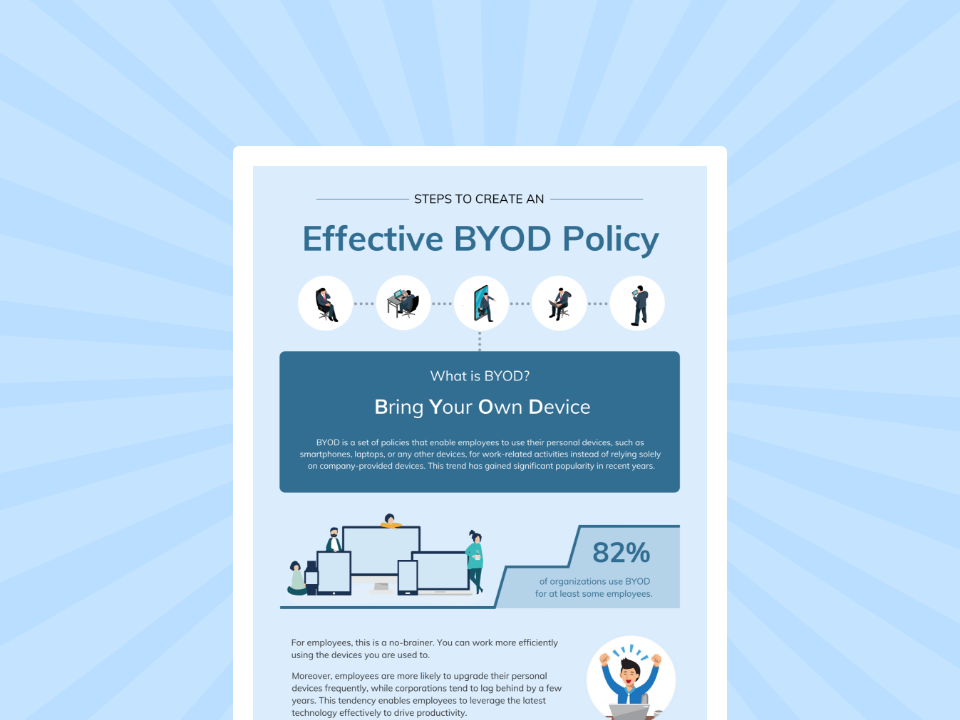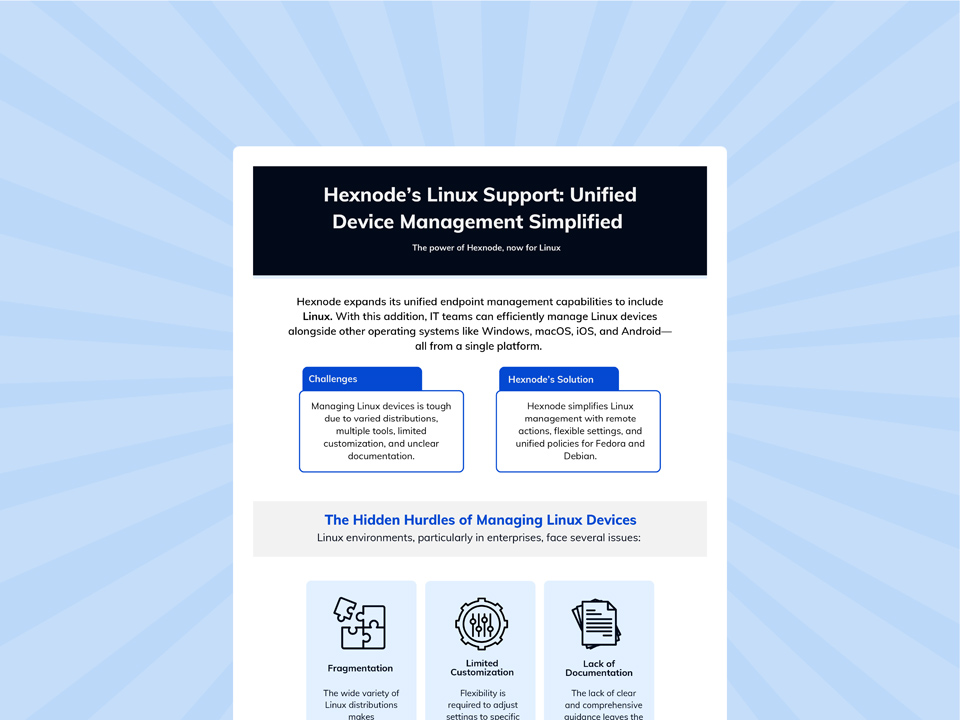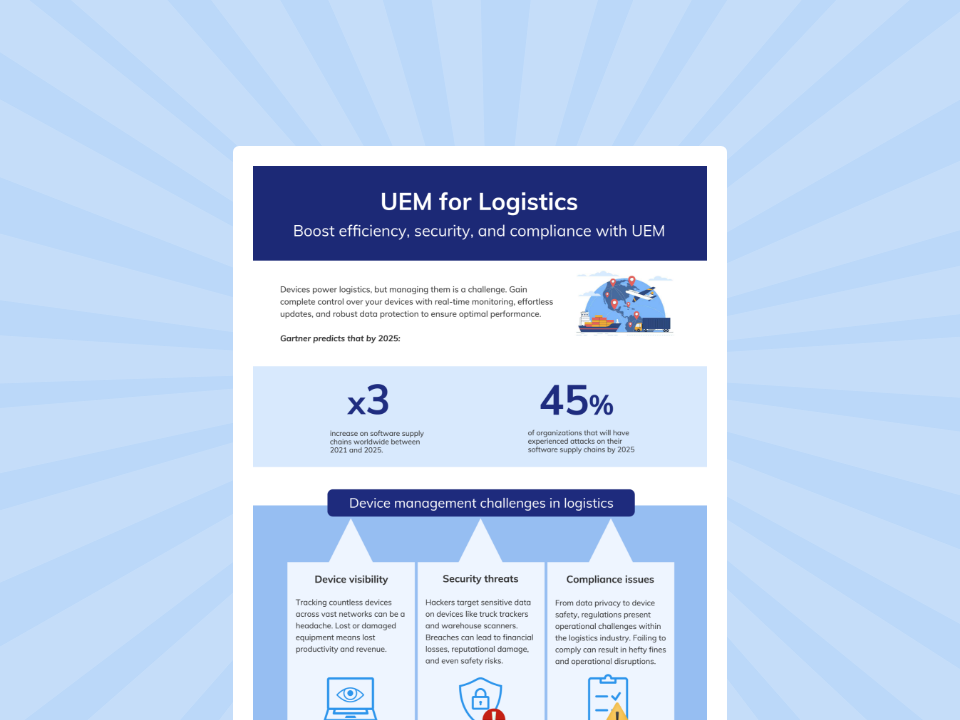BYOD policies give employees more flexibility to use their preferred devices at work.
Are you still struggling with the absence of a well-defined BYOD policy or burdened by an outdated one? It’s high time to craft an effective Bring Your Own Device (BYOD) policy that tackles modern IT challenges head-on, enhancing productivity in your workplace.
Clearing the clouds around BYOD
At its core, a BYOD policy lays down the rules governing the use of personal electronic devices (think laptops, smartphones, and tablets) by employees for work purposes. Embracing BYOD presents a cost-effective alternative for businesses, as they no longer need to purchase and provide work-specific devices to every employee. Instead, it allows individuals to connect to the company’s network, access applications, and work remotely using their beloved gadgets. Additionally, you can explore other device policies like CYOD, COPE, and COBO to find the best fit for your organization.
The call for BYOD policy in the workplace
The number of smartphones used worldwide has already exceeded 5 billion by the end of 2022. Hence, it’s hardly surprising that BYOD has become a compelling option for many businesses. With top-level executives relying on tablets and smartphones during their frequent travels and meetings, the pressure to enable employee-owned devices to access corporate systems, such as email, calendar, and contacts, is mounting.
You might wonder how to unlock the secrets of developing a foolproof BYOD policy and executing it seamlessly. If you’ve opted to embrace BYOD and seek to empower your employees to utilize their personal devices for work, it’s essential to first establish a clear and robust BYOD policy. This policy can either stand as a sub-policy under your existing remote work policy or as an independent one.
To lend you a helping hand throughout this process, we present our comprehensive 8-step plan. This infographic will expertly address concerns related to device management, security, and the overall employee experience, and help you make an effective BYOD policy for your organization.





